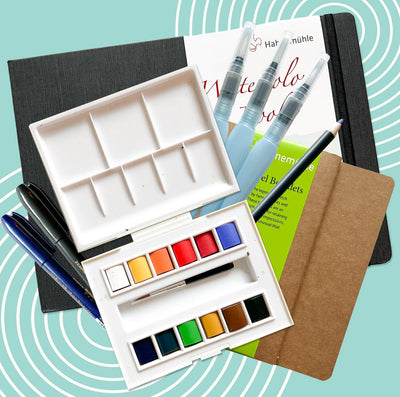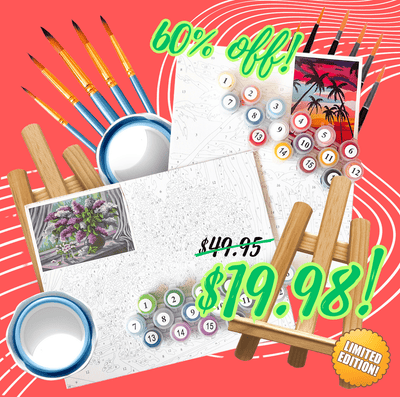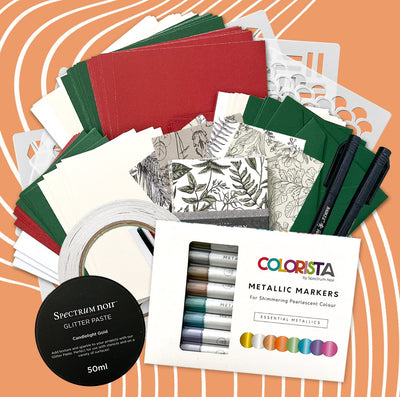Monoprinting is a form of printmaking that allows you to create unique, freeform printed images every time. Unlike the more common relief printing, which uses a block stamp to reproduce the same image over and over again, monoprinting allows the freedom to create each image anew. This will allow you to produce abstract compositions, more complex details, and traced contour images.
The Benefits of Trying Monoprinting
In addition to making unique images with the printed feel, monoprinting gives you the freedom to try different techniques inexpensively. With relief or screen printing, every new image would require a new block, and it can be difficult to conceal mistakes in the etching. However, mistakes made in monoprinting will only affect one image.
You can try new things without ruining a whole day’s work, and because monoprinting shortens the process, you will get results much more quickly. This means that you can also improve more quickly through repeated attempts and move up the learning curve toward professional-quality prints.
1. Subtractive and Additive Method

The Subtractive method means removing ink from your inking palette before you place the paper down to transfer the print. Once you have covered the entire surface of your inking palette in ink, you can use various techniques to remove the ink. Many artists attempt to leave behind interesting textures in the spaces where they removed the ink.
The ink removal is often done with a rag or paper towel, however, you have the freedom to get creative with the items used in this step. I have seen bubble wrap used to great effect to create a honey-comb pattern, and pencil erasers and q-tips can help you make thin lines.
The Additive process means adding ink in a contrastive color back onto the plate. This can be painted on with a brush, or added in a pattern with a stamp. You can then repeat the process of subtracting this ink and adding more until you have reached your desired effect.
2. Ghost Printing
After you have removed the paper from your inking palette with the completed image and put it aside to dry, you can create a Ghost Print. A Ghost Print is made from the residual ink left on the inking palette. This allows you to get two images out of one monoprint, and it also makes cleaning up the inking palette a little bit easier.
Since the ghost image will be much weaker than the original image, it’s best not to use a full thickness paper as this will not be a standalone piece. Tissue papers make a great effect when Ghost Printing because you can use decoupage glue to attach them to another original image. This allows for an interesting layered effect.
3. Dendritic Monoprinting
Dendritic Monoprinting refers to making symmetric prints, that often produce fern- or tree-like textures, by using two inking palettes at once. Add ink to one of the palettes. For this technique, don’t worry about rolling out your ink or making it thin. Instead, you can achieve interesting effects, by applying it in blots and lines.
When you have the desired amount of ink and colors, press the inked palette to the second palette, face to face. Flatten them together so that the ink will spread from one palette to the other. Then, gently pull the two palettes apart and arrange them for applying your paper to them. You can apply one piece of paper to both at once or use different pieces of paper, depending on the effect you want. This will allow you to create abstract symmetrical prints.
4. Masking Techniques

Masking in monoprinting means putting another object in between the inking palette and the paper. This mask can be done without ink, allowing the space that it occupies to show up blank, or you can add a contrastive ink color to it so that it creates a colored design on top of your background.
These objects can be stencils of all different shapes and sizes, pressed organic materials, such as leaves and flowers, and materials for texturing, like crinkled up plastic wrap, or mesh. You can also mask a spot where you intend to hand draw or handwrite something.
5. Collage Printing

Collage Printing means manipulating the paper that you are printing onto in addition to the inking palette. In most cases, you will be printing onto blank paper, so that you can really showcase the print design. However, with Collage Printing you add to the image by gluing other flat images onto the paper. Then, when you apply the ink to the printing paper, you will find that the design covers the collaged images and incorporates them into the print.
Making Collage monoprints are a great way of doing artistic scrapbooking when you use concert tickets or airplane tickets in the collage. This is also a technique that allows you to artistically layer your print on top of a portrait or photograph.
6. Tracing images – portraits, photos
Tracing images refers to tracing the outline or contours of a photograph or portrait in ink. To do this, you need to completely cover your inking palette with ink in an even spread. Then lightly place your print paper on top of the inking palette, securing it in place with tape so that it will not move around.
Lightly secure the image that you wish to trace onto the top of the paper facing up. Keep in mind that once you trace this image, it will be reversed. During this process, be careful not to press too much on the surface of the image. Then, using a dull pencil or pointed stylus, draw out the image that you wish to transfer. When you remove the paper, the lines that you drew out will be colored in the ink.
7. Watercolor monoprinting

Watercolor monoprinting allows you to duplicate an image or reference painting while having your watercolor look like a print. To do this, you will need a transparent inking palette. A rectangle of glass works just fine for this. Place the inking palette above the scaled image that you want to reproduce, and secure with tape so that nothing will shift.
Using watercolors and brushes, paint onto the inking palette, using the bottom image to guide you. When you are done painting, allow the watercolors to dry completely. This could take a few hours, and you will notice that the paints shrink up as the water evaporates. This is okay.
Soak your watercolor paper briefly and then pat it off so that it is damp but not shiny or dripping wet. Press it onto the dried pigments. And then lift off. You can do this process multiple times to achieve layers and outlines.
Monoprinting allows for flexible techniques so try combining some of these, and above all, play around. There’s no rule that says that you need a monotone background color. Different applications of ink to paper can also allow for different shapes to emerge from your print, so if you can’t get all the effects in one go, remember that you can always reink a pad and reprint the same image. Then, when you’re done printing, you can try out enhancing your image with added watercolor effects or colored pencil drawings to create unique multi-media art.


